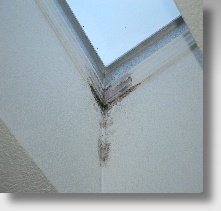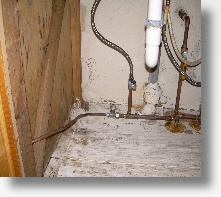WATER INTRUSION EVENT ASSESSMENT
CERL, Inc
ENVIRONMENTAL CONSULTANTS
A water intrusion events consists of events like roof leaks, sewage floods, pipe breaks, storm flooding,
etc. These events cause varying degrees of wetting or damage to building structures and finishes that,
given the materials staying wet/damp for 24 to 48 hours can produce mold growth. The degree of mold
growth will vary with how long the material is wet/damp. If the water remediation fails to provide quick
and thorough drying, mold growth can continue inside walls and other hidden places that are not easily
dried.
The first steps in recovering from a water intrusion event is to correct the problem (eg. repair the roof, fix
the leaking pipe, etc.) and begin drying as quickly as possible. If thorough drying cannot be completed
with the 24 to 48 hour time period, mold growth is quite likely to occur and will continue until the drying is
completed. Also note, that once the growth has occurred, drying out the material will not ‘kill' the mold
that has grown - the mold will simply go dormant and wait for future favorable growth conditions to
resume growth.
A post water intrusion event mold inspection should involve, at a minimum, a thorough visual inspection
of all flooded areas of the home or building looking for indications of water intrusion (staining, paint
blistering, finish delamination, water induced deterioration, etc.), or actual visible mold growth. The visual
inspection should include testing suspect areas with a moisture meter to determine the presence of
moisture at levels that could support mold growth. Following the visual inspection samples of suspect
growth or areas suspected of containing growth may be collected to confirm the presence of mold.
Sampling may include direct sampling of a suspect mold colony, general surface sampling to determine
the mold burden and/or air sampling to determine the presence of elevated levels of mold particulates
(spores, hyphae, etc.) in the air.
A professional mold inspection report should include a description of all areas where mold was found,
the general extent of the mold growth, recommend methods and procedures for remediation and a
recommendation for ‘third party' post remediation ‘clearance testing' to determine the effectiveness of the
clean-up.



